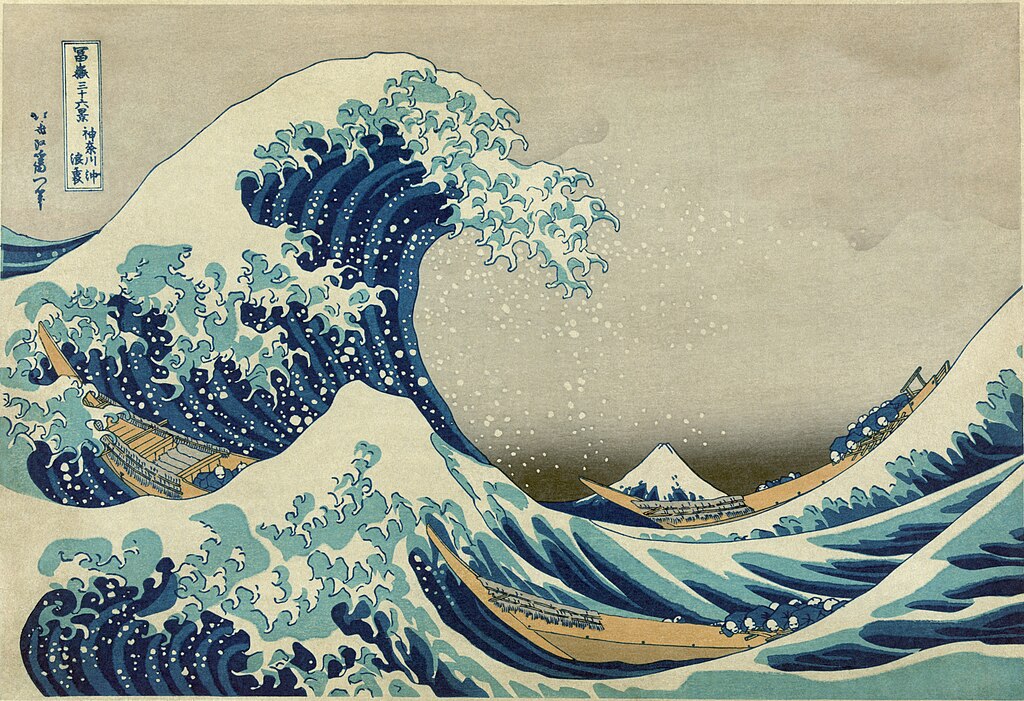A little bit late with this week's post, but that's because today's topic happened earlier this morning. Today I was able to go to the Yamanashi Prefectural Arts Museum with my Japanese Art History class. The museum was currently holding an exhibit focusing on Fuji-san (Mount Fuji) with pieces of art from various time periods throughout Japanese history. While the museum did have limitations on photography, I did manage to get a couple photos to share. Mount Fuji is a very prominent figure in many aspects of Japanese culture as well as art, so there were a lot of works (some from very well-known artists) on display today. Luckily, this weekend is a celebrated holiday/festival time here in Japan, so we were able to see the exhibit at no cost. If you study abroad, I highly recommend looking for things like this in order to not only experience great cultural works, but also save on your wallet.

Outside the Prefectural Museum.
This exhibition featured a lot of paintings, sculptures and calligraphy pieces from periods spanning post war Japan all the way up to the Meiji Restoration (Japan's industrialization period beginning in 1868 after the Boshin War). Many of the paintings included emakimono which literally means "picture scroll" and byoubu which translates to the folding panel screens that were common in Japanese architecture at the time, many of these were painted in the yamato-e style that arose during the 15th century and reflected on the previous Heian period. Yamato-e paintings focused on the so called golden days of Japan. This style was very popular during the 15th century, but it also saw a sort of revival during later periods through painting schools such as the Kano and Tosa sects. The images themselves often focused on very delicately drawn characters and buildings surrounded by a "floating cloud" as it was called. The floating cloud was most often depicted by an opaque gold background with the figures appearing to float among the gold.


Emakimono and Byoubu in Yamato-e style, both featuring Fuji-san.
It was such an incredible experience getting to see some very famous works in person, until this point I had only been studying them in class and seeing images during the lectures. Aside from emakimono and yamato-e paintings, there were also a number of ukiyo-e, which are Japanese wood block prints that originated around the 17th century and lasted until the 19th (though wood block prints can still be found today, especially as souvenirs). A few prints from one of Japan's most famous artists (Hokusai) were on display as well, however, I wasn't able to take a photo of these. For anyone who has studied art, you are likely to know at least on of Hokusai's works, that being "The Great Wave off of Kanagawa", many of the prints from his "36 views of Mount Fuji series are considered to be some of the best works of Japanese art, so to be seeing them in person was an amazing experience. (For reference, I've included photos of some Hokusai prints found online below).


Hokusai's Great Wave and a print from his Fuji-san series (titled "Red" which was on display today).
The exhibition had so much to see that it's hard to put into words, but if you do get the chance to study abroad (whether it's in Japan or anywhere else in the world) make sure you take advantage of the opportunity to see important works of art and other meaningful cultural aspects. Trips like the one I took today really make me realize what a great experience being in another country is, as my time here gets closer to an end, I hope I'll be able to see a lot more of these national treasures that helped shape the cultural and artistic movements, and I hope you'll all take advantage of it too.


Saving the best for last, these were my two favorite pieces from the exhibition. The left was an Edo period painting and the right is likely from the Kano or Tosa school of painting.
After the museum, my class took a trip to a traditional Japanese tea house and enjoyed very high quality matcha (Japanese green tea used in traditional tea ceremonies) and a little mochi cake before heading back to campus.


Sencha to start, followed by a bowl of rich matcha tea and a mochi cake in a beautiful tea house surrounded by Autumn scenery.
Small trips like this really make my time here memorable, far more than my hectic trips to Tokyo, next week's topic will be about a trip I'm taking tomorrow to Mount Fuji area for a BBQ with some students from the Intercultural department.
Until then, じゃあね
Julia.
No comments:
Post a Comment